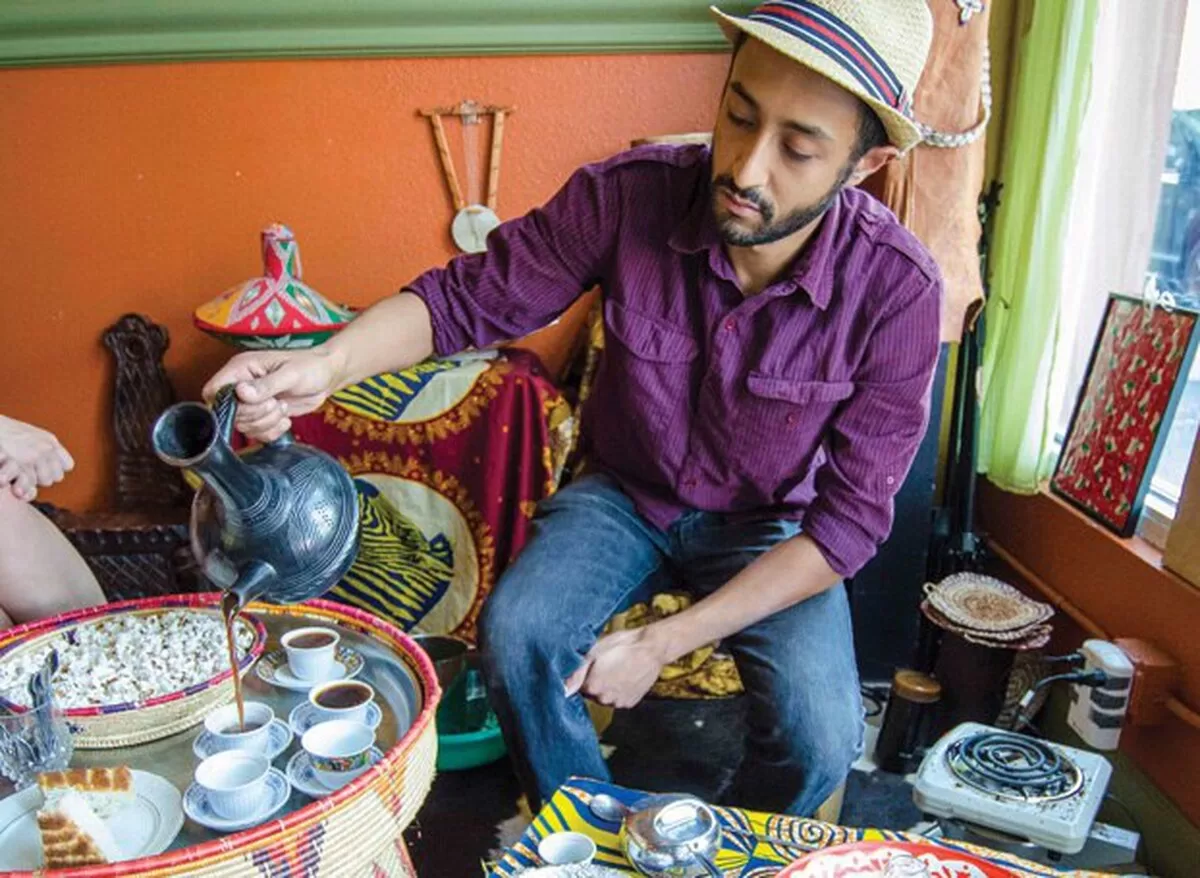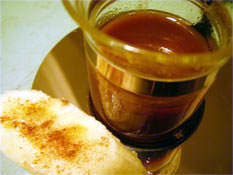With the spread of coffee around the world, the coffee culture of the countries also developed. Countries redesign the coffee according to their own taste habits. Some of them were really consumed by their people, while others remained only touristic. Here in this article, we are going to visit countries and learn their most popular coffee beverages.
Kaiser Melange – Austria
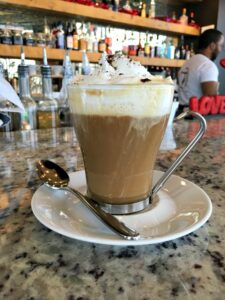
Kaisemelange consists of strong black coffee, egg yolk, and a cup of honey. Egg yolk is mixed with honey and coffee is added slowly while stirring. Cream and other decorations (cocoa etc.) are added on top. Kaiser Melange is also a popular beverage in Scandinavia as well.
Kaffeost – Finland
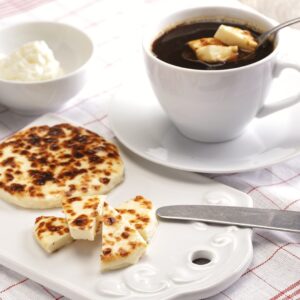
Coffee is part of hospitality in Finland and Kaffeost is a traditional coffee in Northern Finland. It is just coffee with cheese pieces placed at the bottom of the coffee mug to create something magical. It seems interesting, but imagine that it tastes like a piece of tiramisu.
Nous Nous – Morocco
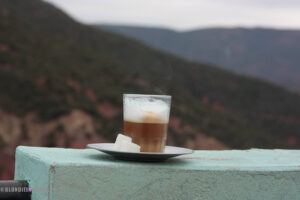
Nous-nous means fifty-fifty. Half glass of heated and frothed milk is fifty and a strong double espresso is the other fifty. Nous-nous is served in small glasses with sugar / or traditional sugar cubes for a sweeter taste.
Café de Olla – Mexico

It is a coffee that contains sugar and spices. It is prepared in a stainless steel pot with coffee, water, brown sugar, cinnamon, and dark roasted ground coffee. It is served in a cup with an orange small cup.
Turkish Coffee – Turkey
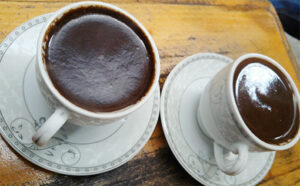
Turkish Coffee is a method of preparing unfiltered coffee. Powder level ground coffee is cooked in a coffee pot with sugar and water. Post-modern coffee patterns left at the bottom of the “fincan” tell you the future after drinking. It is unique in this aspect, it is the only coffee that tells the future. For a unique recipe see https://buyingcoffeemaker.com/videos/how-to-make-traditional-turkish-coffee-cemil-usta-recipe/1118/
Café Bombón – Spain
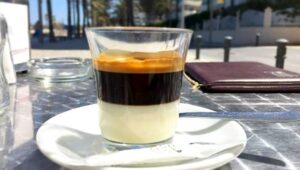
The origin of Café Bombón is Valencia. Café Bombón means ‘coffee with sugar’. It is served in a transparent glass cup so that the layers of black and white are easily visible. It is made with sweetened condensed milk and espresso.
Espresso Romano – Italy
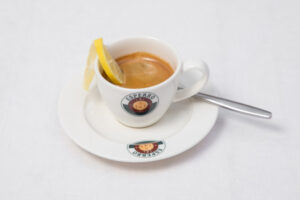
Espresso Romano is a single type of espresso served with a fresh lemon slice on the edge of the glass.
Mazagran – Portugal

Mazagran is obtained by mixing espresso, lemon juice, and lemon soda in a shaker. The recipe did not include lemon when it is imported from Morocco to Portugal, but it meets with lemon after arrival.
Frappé – Greece

Frappé is an “instant” iced coffee served in a tall glass with a straw. It can be easily made with sugar, coffee, milk, and water. All of these ingredients are added to a blender filled with ice cubes. If desired, cream and sweet sauce (chocolate, caramel, etc.) can be added. Interestingly it is usually prepared with instant coffee.
Kan Kohi – Japan
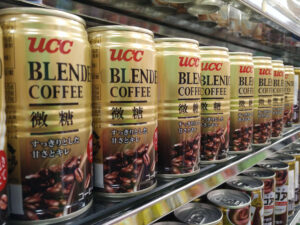
If you say it over and over again, it turns into “can coffee” and you know what it is. It is very interesting that the most popular drink of the Japanese is a can of coffee. It can be purchased from grocery stores and vending machines and can be drunk in cold in summer and hot in winter.
Flat White – Australia, New Zealand

So popular in recent years and a famous gain for a World Coffee Culture Flat White is an espresso-based coffee beverage that dates back to the ’80s. Flat white is popular among Australians and New Zealanders. Flat White is similar to a cup of latte but smaller in volume. After the milk is frothed, the above cream is removed and prepared with thinner foams under the pitcher. It contains a higher proportion of coffee.
Pharisäer – Germany
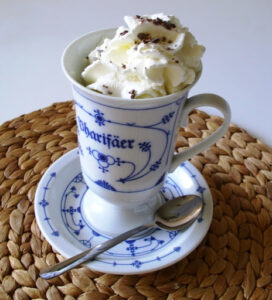
Pharisäer is served in a mug or small cup. Prepared with strong coffee or espresso rum and whipped cream.
Café Sua Da – Vietnam
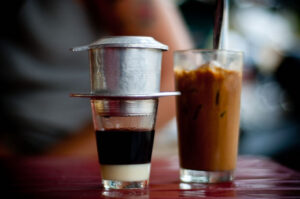
It was introduced by the French Catholic priest who came with an arabica tree in 1857. Cafe Sua Da is a traditional Vietnamese iced coffee. It is made with coarsely ground dark roasted Vietnamese Robusta coffee beans. Since Robusta is not easy to drink, it is boosted with condensed milk under the name of Café Sue Da.
Ca Phe Trung – Vietnam

It is very similar to Café Sua Da but concentrated milk is whipped well with egg yolk before adding it to the coffee. It is also known as Vietnam Egg Yolk Coffee. Egg Coffee is a Vietnamese Coffee. It can be drunk hot and cold.
Café Cubano – Cuba

Coffee is a cultural icon and has become an important part of the Cuban lifestyle. Coffee prepared in Moka Pot is added drop by drop to the sugar and whipped until it becomes as cream. then the remaining coffee in the pot added on top of it. It looks like creamy espresso but actually is not.
Café Chorreado – Costa Rica
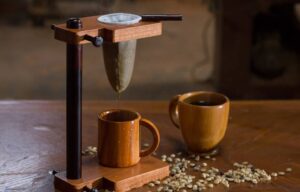
Café Chorreado is the original version of the dripper and found in Costa Rica hundreds of years ago. Basically the methodology is the same with the Hario V60 style dripping and instead of using a paper filter and a cone, Café Chorreado filtered directly from a cloth bag. And of course, the taste is awesome.
Café Touba – Senegal
Cafe Touba is a Senegal coffee prepared with Arabica coffee. Coffee beans are brewed in the teapot with cloves and a kind of Guinea black pepper. In Senegal culture, Touba is a healing drink. Touba is perfect for stomach relaxation, acts as a natural anti-depressant, and is believed it helps to fight with asthma and breathing problems.
Café con Leche – Colombia

Cafe con Leche means Café Latte and it means coffee with milk. There are many different preparation methods. The main purpose is to combine milk and coffee in a slightly frothy way. For this, sugar, whipped coffee, concentrated milk, etc. can be used.
Ipoh White Coffee- Malaysia

Ipoh white coffee is a traditional Malaysian coffee. It comes from a town called Ipoh Old Town, where Chinese immigrants work in tin mines. Many people believe that the name comes from the color of the coffee, but the name refers to the roasting process. Coffee beans are roasted with margarine and no sugar is added.
Café Lagrima – Argentina
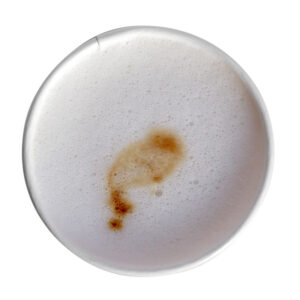
One of the most interesting coffee beverage for the World Coffee Culture. Lagrima means tear in Spanish. Café Lagrima is the perfect choice for anyone who is not a fan of coffee, but occasionally enjoys the ceremony of drinking coffee or loves to handle a coffee cup. Just add a single drop of coffee on top of a whole cup of frothed milk and Cafe Lagrima is ready.
Irish Coffee – Ireland

Irish Coffee invented by a coincidence in 1943 and later became a Christmas drink. It can be consumed all year round. Usually prepared with Irish whiskey Jameson added to the hot coffee and decorated with cream. Coffee should be hard and whiskey have to be Irish. If not, it cant be named Irish coffee.
Kahwa / Qahwa – Saudi Arabia
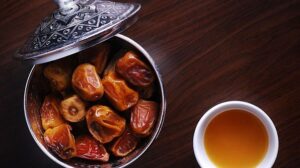
Qahwa is originally a welcome drink from Saudi Arabia. The Sauds usually prepare them as a treat for those who come to their homes for the first time or their loved ones. It is prepared from 100% Arabica coffee beans. Finely ground coffee, ground cardamom, cloves, saffron, rose water, and water are added and boiled on the stove. It is served in handleless cups. Qahwa is believed to have incredible health benefits. It is especially anti-inflammatory and is considered a toxin-shooter.
Bonus:
Cascara – Latin America

Cascara means shell in Spanish. But it’s actually the coffee cherry itself. It is prepared by adding hot water directly. It has a taste that resembles a rosehip. It can also be cooled and consumed by adding ice and a few leaves of fresh mint. It contains more caffeine than coffee.
Quishr / Kishr – Yemen
If you want to make Yemeni style Quishr, grind together cascara, ginger, nutmeg, and cinnamon. Or grind the cascara fine like espresso and mix with grated ginger, nutmeg, and cinnamon. You will get a mixture with a consistency similar to a slurry. You can “cook” it like a Turkish Coffee.
If you think there is something missing here, or your countries favorite beverage is not listed please write in comments, I’ll be happy to include.

